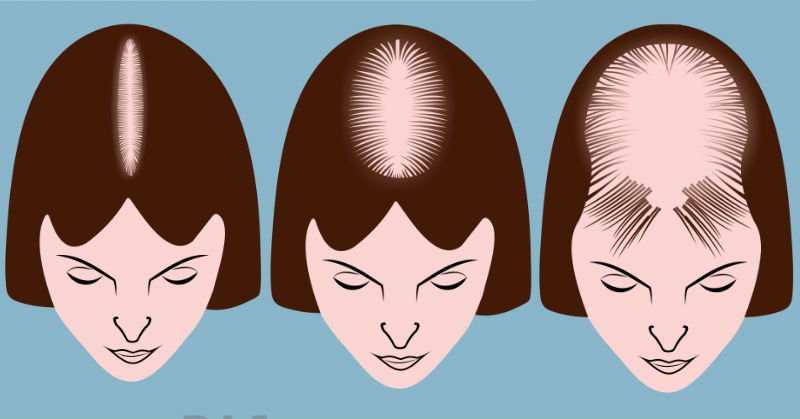When it comes to our hair, we search for the best haircut to go with our face, we color, we layer and we style it. No matter how you look at it, your hair says a lot about you. But can it say anything about your health? There are hair disorders that are more than just a few daily strands of hair falling out. Keep reading our article and find out more about these hair disorders.

Sometimes, your hair is trying to say “cut me”, and others it is trying to say something a bit more serious. Your hair can tell you a lot about the health of your whole body. These are the 10 most common hair disorders associated with more serious health problems.
The 10 most common hair disorders and what they mean
However, some of these symptoms may not always be caused by something serious. You should learn to tell the difference and know when it’s time to see a doctor.
Gray hair
If you’ve heard of Marie Antoinette, you might also have heard about Marie Antoinette Syndrome, which is a sudden whitening of the hair. As the story goes, this eighteenth century French queen’s hair turned completely white the night before she was going to be beheaded. Is it true? That’s up for debate, but what is certain is that this syndrome does exist in which the hair gradually turns gray over a period of up to a few weeks, especially when under extreme stress.
“Oxidative stress can affect pigment producing cells”, says the dermatologist Paradi Mirmirani, MD, of the department of dermatology at The Permanente Medical Group in Vallejo, California.
This differs from person to person, but it you are noticing a new crop of gray hairs, you should take a vacation and find a way to make your life less stressful if you think it’s caused by stress. Gray hairs also have a genetic component, so for some people it’s just a matter of time.
Brittle hair

Brittle hair is one of the symptoms of Cushing Syndrome, a rare condition caused by excess cortisol. Sometimes the treatment for Cushing Syndrome is as easy as changing medication dosage, sometimes the disease requires more serious treatments: surgery, chemotherapy or radiation therapy. These are used to correct the overproduction of cortisol in the adrenal glands.
Dry, thin hair
Hypothyroidism can change the appearance of your hair, as well as other symptoms. They say that people with thyroid disease “may notice an increase in hair loss and a change in its appearance.”
A test for thyroid stimulating hormone (TSH) will see if your hair is trying to warn you of a problem with your thyroid. Other symptoms include fatigue, intolerance to cold, joint pain, muscle pain, swollen face and weight gain.
Hair falling out
Low levels of iron or anemia are disorders that your hair may be trying to warn you about. You will see a lot more hair in your hairbrush after brushing, or on the shower floor. Vegetarians and women with heavy periods are at an increased risk of iron deficiency. Eat more foods rich in iron, and make sure you get tested to see if anemia is what your hair is trying to warn you about.
Thinning hair
Protein is essential for building strong hair – without enough protein, you will notice thinning hair or even hair loss. People with gastrointestinal disorders or problems digesting proteins are at risk. Although the majority of thinning hair, even in women, is due to genetics, a lack of proteins may well be the problem.
Yellow flakes or scales
More commonly known as dandruff, seborrheic dermatitis is a disorder of the skin of the scalp characterized by yellow or white flakes in the hair, on the shoulders and even in the eyebrows. This can be caused by bacteria in the skin or by an inflammatory response – a change of diet may put things back in order.
Of course, you should consult your pharmacist and buy a special shampoo, but if the problem does not go away it’s possible that you will have to take more drastic measures.
Damaged hair
Your hair can be the one to warn you about health conditions, poor dietary habits, and more, but sometimes your hair is trying to tell you not to damage it. Coloring, straightening, curling and doing “treatments” can leave it brittle, dry and with split ends. If you are doing excessive treatments like this to your hair, you might not notice all the other things we’ve talked about that you hair might be trying to warn you of.
Hair loss
When your hair starts to fall out in tufts or patches – especially in women – it can be a sign of diabetes. Diabetes is also associated with thinning hair and scabs on the scalp. If your hair is falling out in round patches it could be a warning sigh of diabetes.
